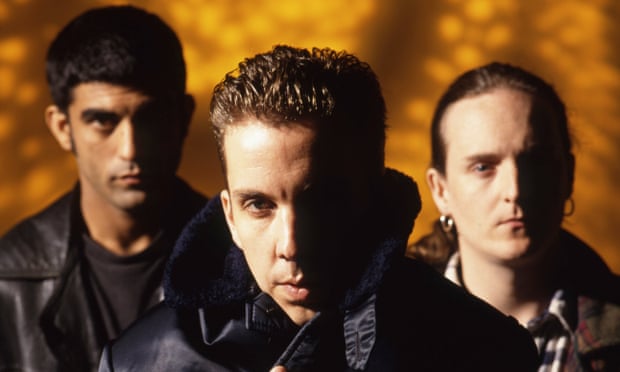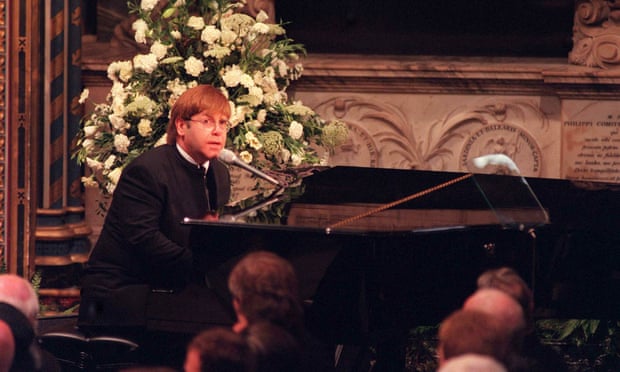What was the soundtrack to Diana, Princess of Wales’s death? Surely Elton John’s Candle in the Wind 1997? After all, it’s the biggest-selling UK single of all time. But no: if you were listening to Radio 1 – and back in late summer 1997, tens of millions still were – the musical backdrop to Diana’s death was downbeat trip-hop and ambient techno. It was Apollo 440. It was the Sabres of Paradise. It was the Aloof. It was chillout music.
Radio 1 had long been sensitive about its playlists at moments of national crisis: during the first Gulf war, for example, Phil Collins’s In the Air Tonight was one of many songs banned for somewhat tangential reasons. At the point of Diana’s death, there was already a sense that the station’s “Obituary CDs” (which then were literally a set of compilation CDs of tasteful instrumental music, kept in a cupboard in each studio) needed an upgrade. Not too upbeat, not too bleak and, crucially, lacking any lyrics that could be interpreted as offensive, chillout was the perfect music to accompany a national tragedy.
This largely instrumental genre had originated in the aftermath of the ecstasy-infused second summer of love in 1988. Poised somewhere between bliss and melancholy, compilations of chillout and downtempo music had been offering soft landings to overstimulated ravers for almost a decade. Now it was repurposed; introduced to listeners with no experience of its illicit origins.
It seems fitting that one of the oddest periods in recent British history should have this tonally awkward broadcasting conundrum embedded in its DNA. The mid-90s were a hedonistic, flippant, slightly wild time. The excesses of Cool Britannia were reaching terminal velocity – as characterised by the unwieldy bloat of Oasis’s third album Be Here Now, which was released just days before the tragic car accident in Paris. Even to non-royalists, Diana’s death felt like something painfully and incongruously real, cutting through the frivolity of the era. A hangover was probably inevitable. But how was it for those musicians either consciously or inadvertently involved in soundtracking this sudden outpouring of sadness and confusion?
“The night of her death we’d been out to a club,” remembers the Aloof’s Jagz Kooner, somewhat inevitably. “The following day, I thought I should put the radio on, to see what was going on. They were playing a couple of things on a loop. There was that Puff Daddy tune [I’ll Be Missing You], then something else, then the Aloof and then back to Puff Daddy again! I thought the radio was broken! In the end, we were on repeat, several times an hour, for days and days. It helped feed me for a while!”
The Aloof were a London-based outfit whose mixture of electronica and dub had coalesced in the aftermath of the acid house explosion. The track that became an unwitting ode to Diana was a 10-minute instrumental epic called The Last Stand – which had emerged as a reworking of their single One Night Stand. Fittingly, its origins were rooted in another aspect of mid-90s excess – production values. Thanks to the self-conscious grandeur of bands such as Oasis and Manic Street Preachers, string sections were de rigueur. “We’d recorded a 32-piece orchestra for One Night Stand,” says Kooner. “The original tune has vocals, drums, bass, synths and all sorts going on. It doesn’t let the strings have their moment of glory.” The Last Stand is a demonstration of the maxim that less is more – possibly an idea that the culture had forgotten in the previous years.

Over at Radio 1, in a variety of ways, order was emerging from chaos. The station had just experienced Matthew Bannister’s revolution with older, more staid DJs being replaced by a raft of younger, edgier voices. This was an overdue cleaning of the stables but not without its problems. Would the recently arrived breakfast DJ Chris Moyles find the right tone during a period of national mourning? Could Mark Radcliffe and Marc “Lard” Riley temper their sometimes abrasive irreverence? To prevent the nation from finding out the hard way, Jeff Smith, who was head of music policy at the time, got to work on updating the obituary CDs and artists such as the Aloof got their moment in the spotlight.
The sheer scale and intensity of public reaction to Diana’s death took everyone by surprise. This was not an atmosphere in which presentational or musical faux pas would have been easily forgiven. Former Radio 1 Newsbeat presenter Tina Ritchie now looks back on the week with amazement. “I was sent to Kensington Palace to do vox pops with the people who had gathered,” she says. “I was standing among these flowers, basically justifying my existence. There was a really hostile attitude towards the press. Basically, once they saw me with a microphone, I might as well have murdered her.”
However, at Radio 1, there was also a tacit recognition of being part of history. Ritchie’s husband, presenter Nicky Campbell, was one of the station’s big beasts at the time. While he describes the general mood there as “poleaxed” by the news, he also hints, wryly, at a tiny, unspoken element of professional pride creeping into DJs’ reactions. “[Station executive] Kate Marsh at Radio 1 was allocating roles,” he says. “And she told me she wanted me to present a special two-hour programme of music and memories. It was like I’d been given the crown jewels. And then I found out that [Simon] Mayo had been given the job of being there on the day [of the funeral] and reporting on it. It produced a festering jealousy that I’ve never quite recovered from!”
Looking back on this bizarre period, all parties still view it with a degree of incredulity. Campbell regards the outpouring of angry grief as a harbinger of the century to come. “You could probably mark the reaction to Diana’s death as the first significant kickback against the so-called mainstream media, he says. “It wasn’t quite ‘The Bilderberg Group and Bill Gates are controlling everything’ but it was certainly a case of trust starting to go.”
Kooner, too, remains gently bewildered by the memory of the hysteria. “That week I had to go to San Francisco because I was doing a gig there,” he says. “I was sitting on the plane between LA and San Francisco, next to this American lady. She was devastated, and she was asking how we all felt. I didn’t want to be rude but I can’t really share that sort of grief. Obviously it was sad that two kids had lost their mum. But I didn’t know her.”
Even if he struggles to share the extreme emotion, the death of royalty remains a strange footnote in Kooner’s career. In addition to the Aloof, he was also a member of electronic group the Sabres of Paradise alongside Gary Burns and the late Andrew Weatherall. When the Queen dies, their track Haunted Dancehall (Nursery Remix) will reportedly be among the tracks on rotation. Is there a particular component of his music that lends itself to such moments? “I don’t know but it’s really weird and it freaked me out when I found out,” he says. “I might have to put it on my gravestone! Purveyor of Monarchy Death Music!”

